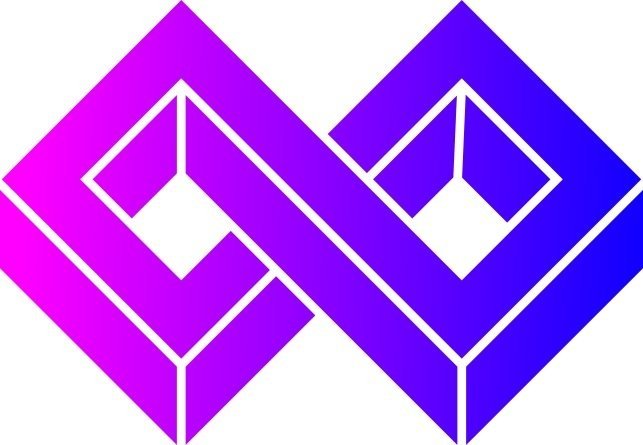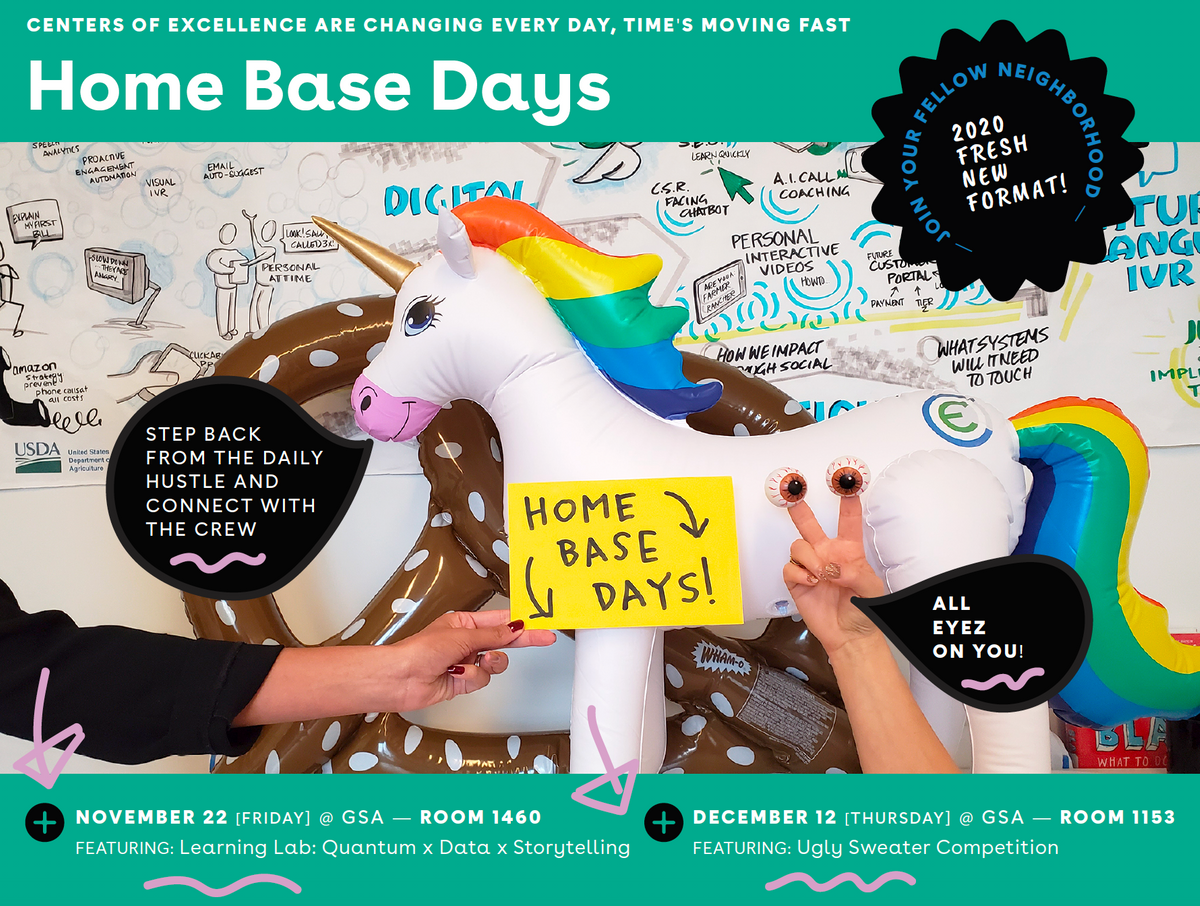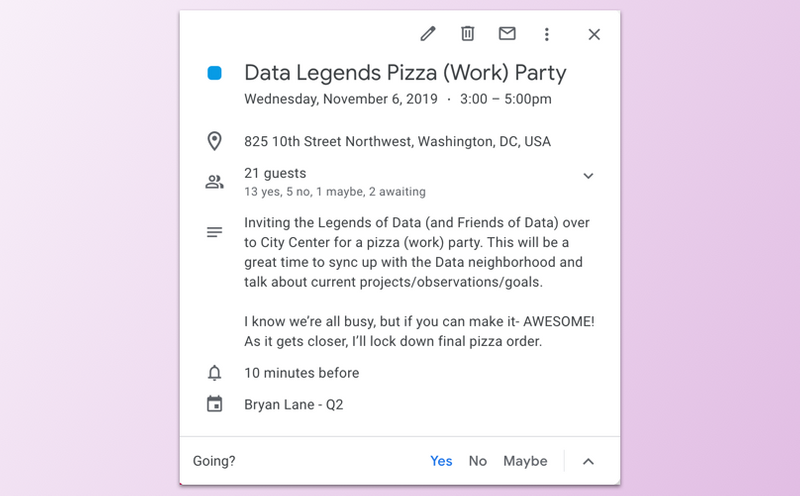10 Employee Experiences to Foster Collaboration
How do we attract and retain the best talent to serve in the federal government? How do we create a more agile culture? Imagine a future where all employees, from the frontlines to C-suite, take pride in being collaborative, insightful, and efficient. What role does a more inclusive and engaging human-centered workforce play in improving performance? These are big questions to hefty problems we face at the intersections of people and technology.
An events flyer from the IT Modernization Centers of Excellence.
A team from the Centers of Excellence (CoE) convened a group of federal Human Capital, IT and Technology Specialists and Innovators around these very questions at the Centers of Excellence Workforce Modernization Workshop Part 1. To support sustainable change that focuses on team engagement, this group compiled 10 achievable tactics for an innovative workforce (in no particular order). Most of these suggestions are low-cost or free. All of these ideas require a small investment of time, creativity, and an open mind.
1. Create spaces: growing as a team requires space and time. Find ways to create space (both physical and mental) to think differently, dream, and explore what’s possible. If you have an unused room or space in your office building, work with maintenance or building facilities to see if you can morph it into an innovation hub. For work schedules, some groups like to offer employees “20%” of their time to invest in learning new things or developing new services or products. Time is equally important to space and holding time to explore is critical. Check out how we carved out time to support a five-day design sprint on data, workforce, and interoperability with federal leaders, industry influencers, and the White House in 2019.
2. Lighten the meeting: try new rituals and meeting habits. How can you explore new shifts in daily routines and habits that help spur growth mindsets? Neuroscience shows that when adding a bit of variety to daily routines, it can result in a transformational impact. Start a meeting with a two-minute song, prep a brief show-and-tell, or explore a snack sharing initiative. Invite a rotation of meeting facilitators to explore new conversation dynamics. Design a meeting flyer like an event that cannot be missed (i.e., create mystery around special guest appearances).
Teams can get creative with homemade cookies that inspire and bring more joy to meetings around complex topics, such as artificial intelligence, cancer research data, and automating patient care. Projects like the TOP Health Sprint emerge when meetings are fun and productive!
3. Block party: engage teams or individual employees to step out of their offices into a shared space. Shared spaces can be hallways, cafeterias, larger conference rooms, or other group spaces. Similar to the ways that neighborhoods can come together in the streets, explore how you might host an event that gets people out of their cubicle mindsets and into a collaborative environment. Choose a theme or concept that inspires or intrigues like future-casting (also known as “strategic planning”) in a more interactive format.2.
Sample calendar invite from a Data Analytics skill exchange that brought people together in a shared space. Teams purchased pizza together and exchanged subject matter expertise.
4. Office scavenger hunt: if people are not exploring other offices or areas of your agency, consider designing a scavenger hunt to encourage people to step out of their daily habit and explore new territories. This can be a simple game that people play on short breaks, en route to and from the office, or at lunch. A great way to get some physical activity steps in, too.
Teams at take a fresh breath outside and experience new views from the GSA rooftop.
5. Rebrand it: if people in your office aren’t using a key service offering, try rebranding it under a more compelling name. For example, if you have a Monday morning management meeting, instead of saying “management” in the invite, use a positive phrase like “Monday Motivational” or “Mind-blowing Monday.” If people still appear to be disengaged, consider asking for feedback to understand why. Maybe there’s a deeper design or organizational issue at play. Read more about how TTS has made data literacy policy briefings more creative with hands-on activities.
Two federal employees from a workshop hold handmade paper emoji reactions and a paper prototype.
6. Map it: maps are critical tools to get people from one location to the next. If you are exploring change in your group, try mapping the process out. Where does the process start and where are you stopping along the way? What does the experience feel like? Who can join? Where are there risks of losing people along the way? Is it really about the destination or is the process just as important? Use metaphors as appropriate — ”river of life” or “employee journey” — or you can try “the gauntlet” or “obstacle course” for more challenging conversations about barriers and roadblocks.
As an alternative to static strategic planning documents, some teams explore new visual forms to contain important organizational data. In this photo, an employee reads Wisdom Gems that were created in a team debrief session at the conclusion of a big project. These gems are used alongside mapping exercises.
7. North Star: can you map out a journey without a North Star? When you begin to veer off course, a North Star — or central vision — is what keeps everyone focused and moving in the right direction. It’s different than mission or goals. As you think about change in your team or office, consider a “North Star” series of development workshops to inform subsequent “mapping” workshops. Consider adding a Team Charter or Team Values to help support the operational approach and leadership brand to drive changes that everyone will believe in.
8. Pop-up Learning Labs: new ways of doing begin with new ways of seeing. Transform a regular conference room into a pop-up Learning Lab. Invite an expert (someone from your team or from a different office) to lead a workshop so that all employees are able to learn something new on a low-cost, regular basis. For example, one might host a creative leadership workshop where people are invited to imagine 100 new ways of looking at an old, seemingly unbeatable human capital problem. Another example could be an overview of artificial intelligence from both the people and data perspectives. No ideas are bad ideas in Learning Labs.
Employees participate in a pop-up Learning Lab
9. Prototype everything: prototyping isn’t just for human-centered design processes or agile software development. The modern work experience is about hosting more frequent check-ins with teams, supervisors, peers, and collaborators. The Census' Opportunity Project is a good example of a collaborative prototyping platform. Annual performance reviews still exist but it’s the everyday feedback exchange that really matters. For example, send a prototype outline of a presentation before sending the whole deck to your leadership. Write a strategic plan out in pencil with index cards as a team before you close your office door to start writing. Get feedback early and often to ensure everyone is aligned and engaged.
10. Go outside: whether it’s a field trip to another division’s office location, an overnight offsite strategic planning session, a walk around the building, or a team lunch — getting out of the office is key to exploring new habits in the workplace. Consider ways to get out of the office on a regular basis. Getting out of the office helps refresh perspectives.
Pro tip: Many experiences on this list can be combined!








